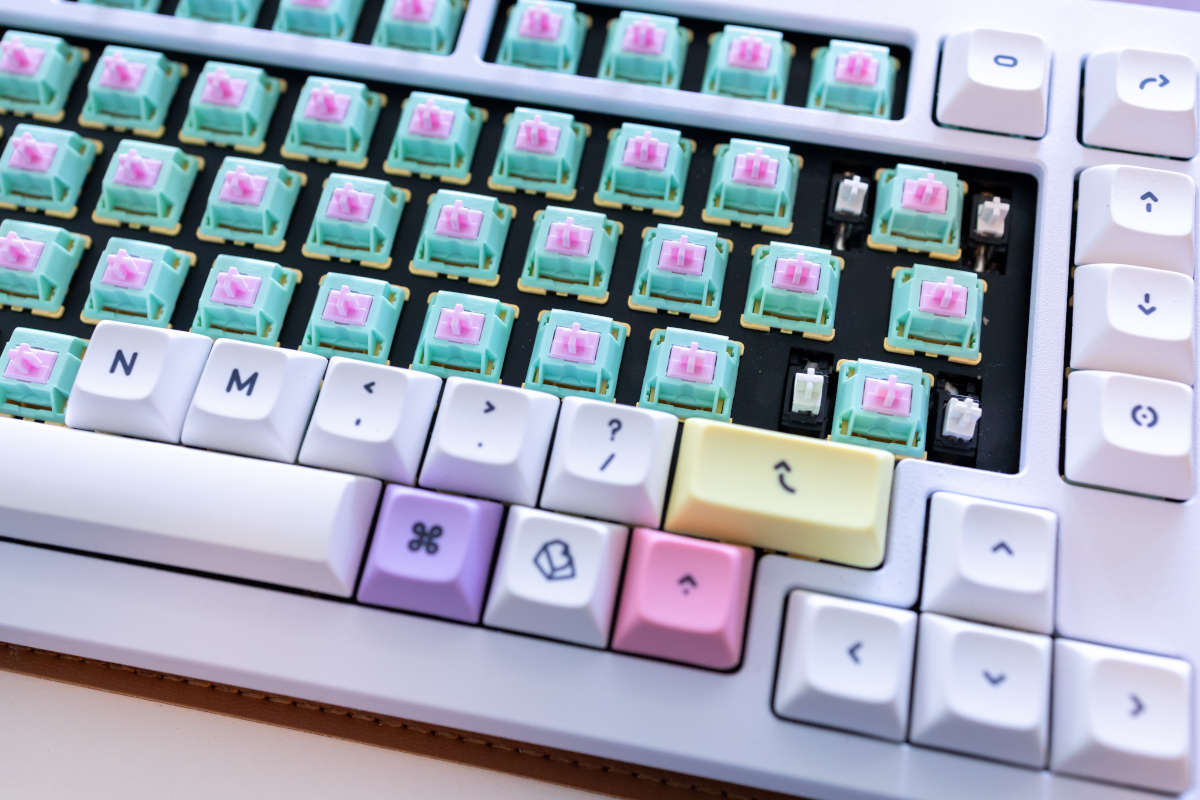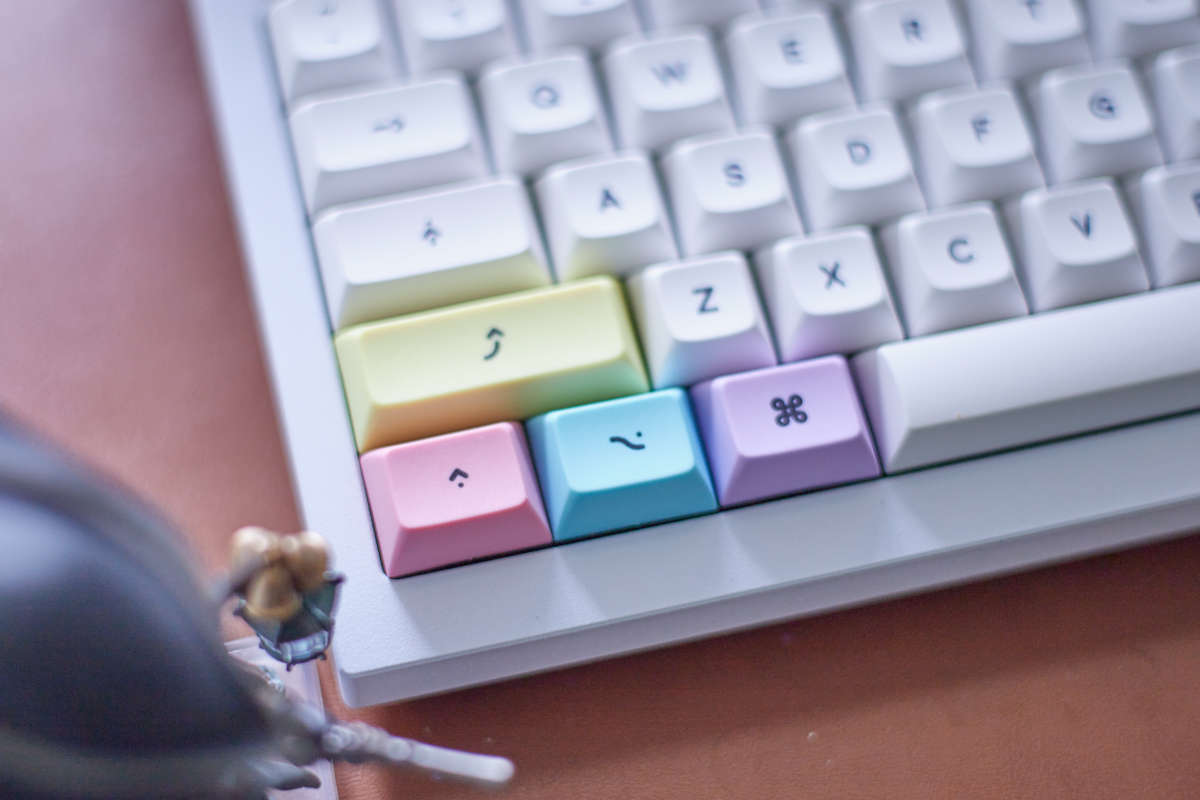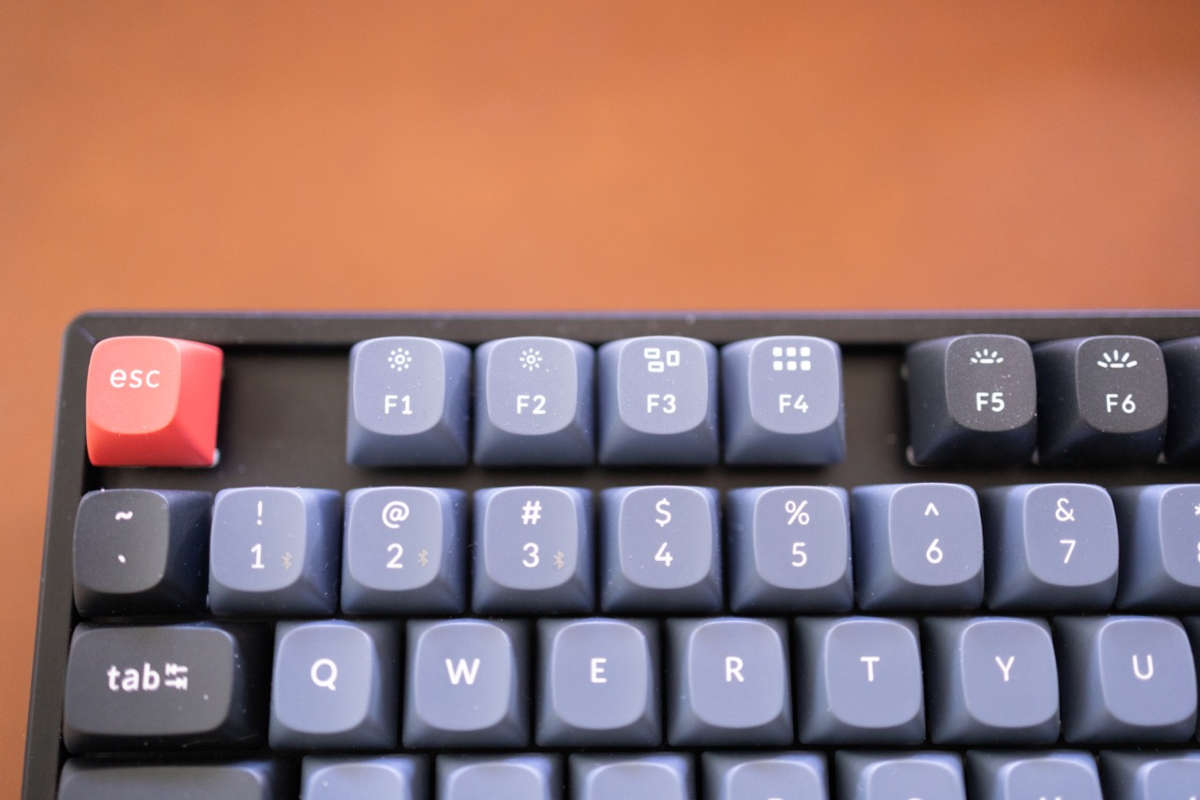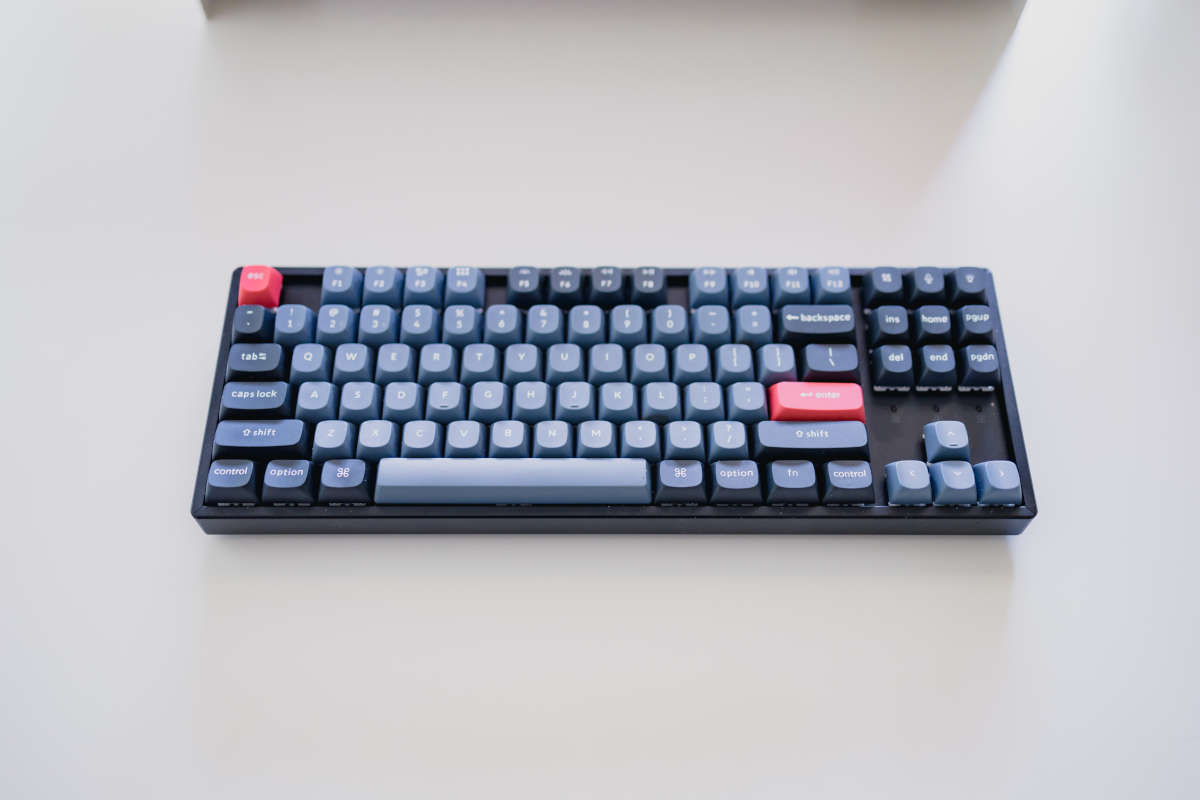An Introduction to Mechanical Keyboards
We love keyboards here at The Sweet Setup (proof here, here, here, and yes, here), especially mechanical keyboards, so today we’re going to walk through the basic things you need to know when shopping for mechanical keyboards. We’re also going to do brief reviews of a few Keychron keyboards that we think are great starter boards for Apple users who want to get into the mechanical keyboard world without giving up some of the quality-of-life features we’re used to.
The Switches

The fundamental thing that makes mechanical keyboards mechanical are the switches. This topic is potentially infinite in scope, but we’re not going to get into everything in this article, so here’s the basics of what you need to know about switches.
At a very broad level, there are 3 types of mechanical switches: tactile, clicky, and linear. See, when typing with mechanical switches, there is an actuation point which is where you have pressed the key down far enough for it to register and type that letter on the computer. That point is actually not all the way down as you might expect, it’s almost always midway down. This means you don’t actually need to press the key all the way down when typing, gaming, or whatever else you do on your computer.
- Tactile switches have a subtle bump at the actuation point, letting you know that you’ve successfully typed the key.
- Clicky switches have that same bump, but they also make a noise when you hit the bump.
- Linear switches have no bump or noise at the actuation point.
We started with those general categories rather than brands because while each brand does things a little differently, knowing whether you prefer tactile, clicky, or linear switches will help you know what sort of switches from each brand you would be interested in.
And there are indeed tons of companies out there making mechanical key switches, but the names you’re most likely to see are Cherry and Gateron. Logitech and Razer do their own things, and there are some smaller companies out there making more niche switches, such as the delightful C³Equalz x TKC Banana Split Switches.
But we know that just reading about these differences doesn’t give you everything you need to make a choice, so here’s a few tips:
- This video does sound tests for a bunch of different key types.
- If you mostly type on your keyboard, then tactile or clicky keys are typically best.
- If you plan on gaming more than typing, then linear switches are more popular.
- If all else fails, you can buy relatively cheap testers that will let you try out a bunch of switch types and see which you like best. Click here to see some results on Amazon.
- You may hear people talking about lubing their switches. Most switches come pre-lubed from the factory, but you can get a smoother key press with a nicer sound if you lube your keys yourself. I’ve never done this, but enthusiasts swear by it. Here’s a guide if you’re curious on learning more.
- It’s not the end of the world if you don’t get your absolute perfect switch type on the first try. This is meant to be a fun hobby, and these are all totally functional.
The Key Caps

Depending on your personality, this is the most exciting part. And why not?! The key switches are important for the feel of your keyboard, but the key caps are where you really get to change the look. As a bonus, the keycaps are the easiest part of a keyboard to customize, and in my opinion it’s also the most fun, which is a bonus.
Most mechanical keyboard makers know that their customers are going to change the caps, so most mechanical keyboards will ship with a key removal tool, but you can also just pull key caps off with your fingers if you want. The tool does make it a bit easier, though.
Most keyboards you’ll find today use the Cherry MX mount, and the vast majority of custom keycap sets out there use this as well, so the whole world of custom key caps is open to you if you get a keyboard with that mount. There are some different profiles you may want to pay attention to, and you can read more about those here. In general, if you see a set that looks nice, they will probably work on your board.
Here’s a few websites you can check out that sell keycap sets and a bunch of other mechanical keyboard accessories:
The Board
We’re just not going to get too deep into this, since unless you’re building a keyboard from scratch, you don’t need to know too much here. The one thing you should know for sure and look for when buying a mechanical keyboard is whether the board is hot-swappable.
The board is what actually sends commands to your computer, and the switches make contact with the board to indicate a key was pressed. The switches are connected to the board either by soldering the switches to the board, or by simply pressing them into the board and having them click into place. If you can just snap in the switches, then the keyboard will be advertised as being hot-swappable.
Obviously, it’s much easier to snap in new key switches than to solder them on, so if you think you may want to change the key switches one day, I usually recommend a board that’s hot-swappable to save yourself a lot of work.
And one more thing you see on some boards and not others is the ability to reprogram them with software such as QMK or Via. These apps let you customize the layout of your keyboard, so if you don’t like how some keys are laid out, you can change them to whatever you’d like. You can even use these tools to create macros that run potentially complicated keyboard combinations with a single key press. For example, if you always forget that Cmd+Ctrl+Q is the shortcut to lock your Mac, you can set that to your F12 key or any other key you’d like.
Why Keychron?
While you can use basically any mechanical keyboard with a Mac or iPad, most of the mechanical keyboard space assumes that buyers will be using their keyboards with Windows desktops. Whether that manifests in the form of Windows-specific key caps (no Command or Option buttons to be found!) or that the only connection method is over USB, these can sometimes feel less at home to Apple users who are familiar with different quality-of-life features, and products that feel tailor-made for their devices.
This is where Keychron sets itself apart from most other players in the space. Not only are their keyboards compatible with Macs and iPads, they come out of the box assuming you will be using an Apple device.
So while there are tons of keyboards out there, and they all can work with a Mac, Keychron delivers an excellent out-of-the-box experience for Apple users. There are more options out there, and some enthusiasts may scoff at such a “pedestrian” pick, but I can’t think of another brand that creates a better experience for first-time (or even 5th timers like me!) mechanical keyboard buyers.
Mini Review: Keychron K8 Pro

The Keychron K8 Pro is brand new as of this writing, and in my opinion, it’s the best combination of features, quality, and price most Mac users can get from a mechanical keyboard. Here are the highlights:
- Tenkeyless (TKL) layout, which means a standard keyboard layout, just without a full number pad
- Options for tactile, clicky, or linear switches made by Gateron
- Hot-swappable board so switching out switches is a breeze (switch remover tool included)
- Supports wired and wireless connections (pair up to 3 Bluetooth devices)
- Works with macOS, Windows, iPadOS, iOS, and Android
- Internal foam and silicon layers reduce echos and create a generally more solid board
- Fully customize the layout with QMK or Via
Basically, this keyboard has great bones, and will deliver a great typing experience out of the box for anyone. Mac users will also appreciate it working perfectly out of the box with all the macOS actions you’d expect, including media controls, screen brightness, and volume buttons. If you’ve got decades of muscle memory built up for Apple’s own keyboards, this will be a really easy transition.

That familiarity is what makes this an easy keyboard to recommend to all Mac users, but you also don’t need to worry about outgrowing this keyboard as you get more interested in the mechanical keyboard space. You can easily replace the key caps if you want to give it a new look. You can (hot) swap out the switches if you want to go for something a bit more adventurous down the road. You can reprogram it to change the layout or to add your own macros to improve your productivity.
And it’s all built to be taken apart, so you can disassemble this entirely with simple tools (all included in the box), change literally anything, and build it back up however you see fit. Heck, you can decide you don’t like the foam they use to dampen the clicks, so you can take it apart, add your own foam, and build it back up.
You can use this keyboard in wired mode with a USB-C connection, or you can use Bluetooth for a wireless connection. I have this paired to my personal Mac as well as my work Mac and gaming PC, so I really appreciate being able to pair with 3 different devices over Bluetooth. I’m able to do some personal work in the morning on my Mac, switch instantly to using the same keyboard with my work Mac throughout the day, and then switch seamlessly to my Windows PC after work to play some games and unwind. That’s a level of both convenience and flexibility that’s very similar to Logitich’s MX series of keyboards and mice, which is amazing, and is simply something you don’t see on any other mechanical keyboards out there (and Logitech’s devices don’t support true wired modes, so it’s even more flexible!).
This all comes in a relatively decent price as well, especially if you’re used to buying Apple’s keyboards. Apple’s Magic Keyboards range from $149 to $199, while the full maxed out K8 Pro is just $109. $100 for a keyboard certainly isn’t cheap, but it’s cheap compared to Apple’s own keyboards, and it’s on the low end compared to much of the mechanical keyboard market as well.
Recommendation
If you’ve made it this far, you should have a good baseline of understanding the core parts of a mechanical keyboard — the switches, the keycaps, and the board — and hopefully you’ve already got a decent idea of what might work for you.

Use the links throughout the article to shop around if you’d like, and even Keychron themselves have a wide variety of keyboards in different sizes and configurations, so you certainly don’t need to get the K8 Pro, although I do think that the combination of price point and features make it a great fit for most people.
And just remember, this is supposed to be fun, so don’t take it too seriously! It’s fun to experiment, and it’s a rush when you stumble upon a set of key caps that you think look amazing and realize that you can get them on your own keyboard with ease.
